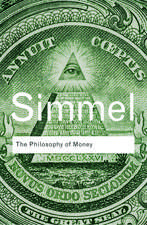Monetary Policy and the Oil Market: ADB Institute Series on Development Economics
Editat de Naoyuki Yoshino, Farhad Taghizadeh-Hesaryen Limba Engleză Hardback – 14 mar 2016
economics is presented in a reader-friendly format without being overloaded with excessive and complicated calculations.enUsed="false" QFormat="true" Name="Subtle Emphasis"/>
| Toate formatele și edițiile | Preț | Express |
|---|---|---|
| Paperback (1) | 380.63 lei 6-8 săpt. | |
| Springer – 25 apr 2018 | 380.63 lei 6-8 săpt. | |
| Hardback (1) | 387.75 lei 6-8 săpt. | |
| Springer – 14 mar 2016 | 387.75 lei 6-8 săpt. |
Preț: 387.75 lei
Nou
Puncte Express: 582
Preț estimativ în valută:
74.20€ • 80.85$ • 62.52£
74.20€ • 80.85$ • 62.52£
Carte tipărită la comandă
Livrare economică 24 aprilie-08 mai
Preluare comenzi: 021 569.72.76
Specificații
ISBN-13: 9784431557968
ISBN-10: 4431557962
Pagini: 143
Ilustrații: XVIII, 143 p. 29 illus., 26 illus. in color.
Dimensiuni: 155 x 235 x 11 mm
Greutate: 0.41 kg
Ediția:1st ed. 2016
Editura: Springer
Colecția Springer
Seria ADB Institute Series on Development Economics
Locul publicării:Tokyo, Japan
ISBN-10: 4431557962
Pagini: 143
Ilustrații: XVIII, 143 p. 29 illus., 26 illus. in color.
Dimensiuni: 155 x 235 x 11 mm
Greutate: 0.41 kg
Ediția:1st ed. 2016
Editura: Springer
Colecția Springer
Seria ADB Institute Series on Development Economics
Locul publicării:Tokyo, Japan
Public țintă
ResearchCuprins
1 Introductory Remarks: What’s behind the Recent Oil Price Drop? Naoyuki Yoshino and Farhad Taghizadeh-Hesary.- 2 Impact of Expansionary Monetary Policy on Crude Oil Prices Farhad Taghizadeh-Hesary and Naoyuki Yoshino
.- 3 Which Side of the Economy Is Affected More by Oil Prices: Supply or Demand? Farhad Taghizadeh-Hesary and Naoyuki Yoshino.- 4 How Did Monetary Policy Inflate Oil Prices Following the Subprime Mortgage Crisis? Naoyuki Yoshino and Farhad Taghizadeh-Hesary.- 5 Economic Impacts of Oil Price Fluctuations in Developed and Developing Economies Farhad Taghizadeh-Hesary, Naoyuki Yoshino, and Abbas Assari-Arani.- 6 Monetary Policy in the Japanese Economy Incorporating Energy Prices Naoyuki Yoshino and Farhad Taghizadeh-Hesary.- 7 Macroeconomic Impacts of Oil Price Fluctuations in a Trade Linked Case Farhad Taghizadeh-Hesary, Naoyuki Yoshino, Ghahraman Abdoli, and Asadollah Farzinvash.- 8 Concluding Remarks Naoyuki Yoshino and Farhad Taghizadeh-Hesary.- Index
Normal 0 false false false EN-US ZH-CN AR-SA /* Style Definitions */ table.MsoNormalTable{mso-style-name:標準の表;mso-tstyle-rowband-size:0;mso-tstyle-colband-size:0;mso-style-noshow:yes;mso-style-priority:99;mso-style-parent:"";mso-padding-alt:0cm 5.4pt 0cm 5.4pt;mso-para-margin:0cm;mso-para-margin-bottom:.0001pt;mso-pagination:widow-orphan;font-size:10.0pt;font-family:"Cambria","serif";mso-fareast-language:ZH-CN;}
.- 3 Which Side of the Economy Is Affected More by Oil Prices: Supply or Demand? Farhad Taghizadeh-Hesary and Naoyuki Yoshino.- 4 How Did Monetary Policy Inflate Oil Prices Following the Subprime Mortgage Crisis? Naoyuki Yoshino and Farhad Taghizadeh-Hesary.- 5 Economic Impacts of Oil Price Fluctuations in Developed and Developing Economies Farhad Taghizadeh-Hesary, Naoyuki Yoshino, and Abbas Assari-Arani.- 6 Monetary Policy in the Japanese Economy Incorporating Energy Prices Naoyuki Yoshino and Farhad Taghizadeh-Hesary.- 7 Macroeconomic Impacts of Oil Price Fluctuations in a Trade Linked Case Farhad Taghizadeh-Hesary, Naoyuki Yoshino, Ghahraman Abdoli, and Asadollah Farzinvash.- 8 Concluding Remarks Naoyuki Yoshino and Farhad Taghizadeh-Hesary.- Index
Normal 0 false false false EN-US ZH-CN AR-SA /* Style Definitions */ table.MsoNormalTable{mso-style-name:標準の表;mso-tstyle-rowband-size:0;mso-tstyle-colband-size:0;mso-style-noshow:yes;mso-style-priority:99;mso-style-parent:"";mso-padding-alt:0cm 5.4pt 0cm 5.4pt;mso-para-margin:0cm;mso-para-margin-bottom:.0001pt;mso-pagination:widow-orphan;font-size:10.0pt;font-family:"Cambria","serif";mso-fareast-language:ZH-CN;}
Textul de pe ultima copertă
While oil price fluctuations in the past can be explained by pure supply factors, this book argues that it is monetary policy that plays a significant role in setting global oil prices. It is a key factor often neglected in much of the earlier literature on the determinants of asset prices, including oil prices. However, this book presents a framework for modeling oil prices while incorporating monetary policy. It also provides a complete theoretical basis of the determinants of crude oil prices and the transmission channels of oil shocks to the economy. Moreover, using several up-to-date surveys and examples from the real world, this book gives insight into the empirical side of energy economics. The empirical studies offer explanations for the impact of monetary policy on crude oil prices in different periods including during the subprime mortgage crisis of 2008–2009, the impact of oil price variations on developed and emerging economies, the effectiveness of monetary policy in the Japanese economy incorporating energy prices, and the macroeconomic impacts of oil price movements in trade-linked cases. This must-know information on energy economics is presented in a reader-friendly format without being overloaded with excessive and complicated calculations.
Caracteristici
Offers a reader-friendly treatment of the topic from both theoretical and empirical approaches Useful for researchers and graduate students as well as those who have an interest in the energy economics Includes several up-to-date examples of energy economics from a real world perspective



















